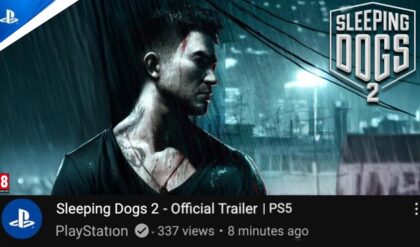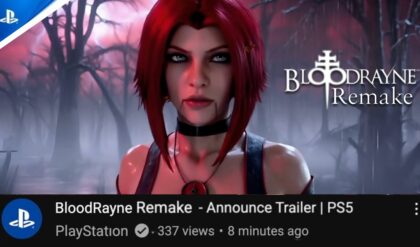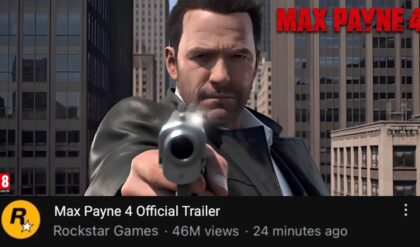Netflix’s Adolescence, a four-part British crime drama that premiered on March 13, 2025, has gripped viewers worldwide with its haunting portrayal of a 13-year-old boy, Jamie Miller, accused of murdering a female classmate. Filmed in a groundbreaking one-shot format, the series—co-created by Jack Thorne and Stephen Graham—has soared to the top of Netflix’s charts, amassing over 66.3 million views in its first two weeks. Its raw intensity, coupled with standout performances from Owen Cooper, Stephen Graham, and Christine Tremarco, has left audiences questioning: Is this chilling tale rooted in reality? While Adolescence isn’t a direct retelling of a single true story, its inspiration draws from a disturbing tapestry of real-life events and societal issues plaguing the UK and beyond. Here’s the full explanation of the real-life story behind the series—and how it reflects a growing crisis.
A Fictional Tale with Real-World Echoes
At its core, Adolescence follows Jamie Miller (Owen Cooper), a seemingly ordinary teen whose arrest for stabbing his classmate, Katie Leonard, unravels his family and community. The series unfolds in real time across four episodes, each a single continuous shot, immersing viewers in the chaos of his parents—Eddie (Stephen Graham) and Manda (Christine Tremarco)—and the investigators probing the crime. While Jamie’s specific story is fictional, co-creators Thorne and Graham have been candid about its origins: a visceral response to the UK’s escalating knife crime epidemic, particularly among young boys.
Stephen Graham, who also stars as Jamie’s father, told Netflix’s Tudum, “I read an article about a young boy stabbing a young girl… and then it happened again, and again. It hurt my heart. I wanted to ask, ‘What’s going on? Why is this happening today?’” Though he didn’t pinpoint a single case, Graham’s words reflect a broader trend. In March 2023, the UK’s Ministry of Justice reported nearly 18,500 knife-related convictions or cautions, with 17.3% of offenders aged 10 to 17, according to the House of Commons Library. This statistic underscores the chilling reality that Adolescence seeks to explore: the normalization of violence among youth.
Knife Crime: The UK’s Growing Nightmare
The series’ backdrop mirrors a grim truth. Over the past decade, knife crime in England and Wales has nearly doubled, per the Office for National Statistics. High-profile cases have punctuated this rise, resonating with Adolescence’s narrative. Take the tragic murder of 15-year-old Elianne Andam in September 2023, stabbed to death in London by 17-year-old Hassan Sentamu, who was sentenced to a minimum of 23 years in March 2025. Or the Southport attack in July 2024, where 17-year-old Axel Rudakubana killed three young girls at a Taylor Swift-themed dance class, earning a life sentence with a 52-year minimum. These incidents, while not direct blueprints for Jamie’s story, highlight the kind of violence that sparked Graham’s creative fire.
Director Philip Barantini reinforced this connection, telling The Wrap, “In the UK, there’s a real problem with knife crime, certainly in the younger generation. There have been a series of young boys killing young girls with knives, and it was really upsetting.” Unlike sensationalized true-crime adaptations, Adolescence doesn’t recreate a specific event but distills these tragedies into a universal cautionary tale—one that probes the “why” behind such acts rather than just the “what.”
The Shadow of the Manosphere
Beyond knife crime, Adolescence delves into a darker societal undercurrent: the radicalization of young men via the internet, particularly through the “manosphere” and incel (involuntary celibate) subcultures. In the series, Jamie’s motives unravel through his exposure to toxic online ideologies—echoed by real-world figures like Andrew Tate, who’s name-dropped in the show. Tate, a controversial influencer known for misogynistic rhetoric, has amassed a following among disaffected youth, amplifying ideas like the “80/20 rule” (80% of women pursue 20% of men), which Jamie parrots in the series.
Jack Thorne, the show’s co-writer, told The Independent, “Teenage boys are watching a lot more dangerous stuff than Andrew Tate… We were trying to present a portrait of complexity of this kid that had been made by all sorts of different influences.” Thorne’s research into incel culture revealed its seductive logic for isolated teens. “If I was an isolated kid, I would find answers as to why I felt a bit lost,” he admitted to The Guardian. This theme hits home in Adolescence’s second episode, where DI Luke Bascombe (Ashley Walters) uncovers Katie’s taunts labeling Jamie an “incel”—a trigger that spirals into violence.
Real-life parallels abound. The 2018 Toronto van attack by Alek Minassian, an incel-inspired killer who murdered 10 people, and Elliot Rodger’s 2014 rampage near UC Santa Barbara, which left six dead, underscore the lethal potential of such ideologies. While Jamie’s age (13) makes his incel label jarring—“How can he be an involuntary celibate at 13?” Bascombe exclaims—the show suggests these ideas take root early, fueled by social media’s unchecked reach.
A Family Like Any Other
What sets Adolescence apart is its refusal to scapegoat. Graham told Tudum, “We could have made a drama about gangs or a kid with an alcoholic mother or abusive father. Instead, we wanted you to look at this family and think, ‘My God, this could be us!’” Jamie’s parents are neither neglectful nor dysfunctional—Eddie’s a plumber, Manda’s a caring mom—making their son’s actions all the more unsettling. This mirrors a sentiment from UK Prime Minister Keir Starmer, who in January 2025 warned of “loners, misfits, and young men” radicalized online, calling it a new terror threat.
The series’ third episode, featuring psychologist Briony Ariston (Erin Doherty), digs into Jamie’s psyche, revealing his warped self-image (“I’m ugly”) and a failed attempt to ask Katie out after her topless photo circulated—a twisted bid to “save” her that ends in murder. It’s a fictional arc, but it echoes real cases where rejection and online echo chambers ignite violence.
A Call to Action
Adolescence isn’t just entertainment—it’s a plea. Thorne told the BBC, “I want it to be shown in schools, in Parliament. It’s crucial because this is only going to get worse.” The show’s 98% Rotten Tomatoes score and cultural ripple—UK ratings topped 6.45 million for its premiere—prove its resonance. Parents, educators, and even Starmer, who watched it with his teens, have lauded its urgency.
Posts on X reflect this divide: some see it as a vital wake-up call, others decry its fictional liberties. One user noted, “The point was that the killer was ordinary, radicalized online—no trauma, just the MRA movement,” while another argued, “The real story is Elianne, not this whitewashed version.” Yet, the creators never claimed a one-to-one adaptation—they aimed to spark dialogue, not dictate history.
The Bigger Picture
Adolescence draws from a well of real tragedies—knife crime stats, incel-fueled attacks, and cases like Andam’s and Rudakubana’s—but it’s not a documentary. It’s a mirror, reflecting society’s failures: unchecked online radicalization, youth violence, and the pressures crushing today’s teens. Graham’s personal stake as a father shines through; he told Rolling Stone UK how his son’s exposure to Tate’s workout videos morphed into misogynistic rants via algorithms, a chilling anecdote woven into Jamie’s descent.
At 1500 words, this exploration barely scratches the surface of Adolescence’s depth. Its real-life roots aren’t in a single headline but in a pervasive crisis—one that’s claimed lives and demands answers. As Thorne said, “There’s a logic to incel culture,” and Adolescence dares us to confront it. All episodes are streaming now on Netflix, a must-watch that’s as unsettling as it is essential.





